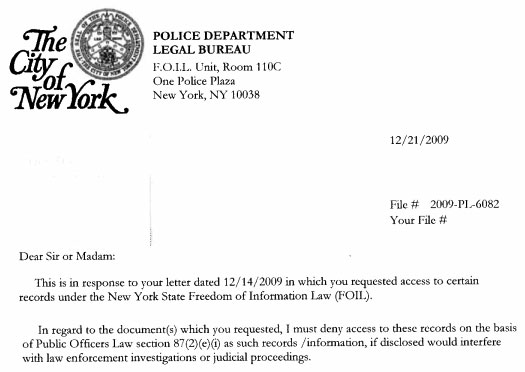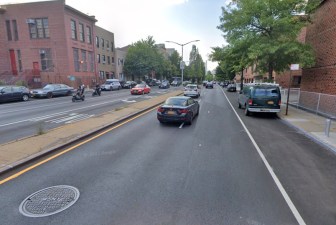One Month After Fatal Bike Crash, NYPD Hasn’t Answered Key Questions
 NYPD’s F.O.I.L. Unit denied a request for information about the crash that killed cyclist Solange Raulston in December, citing an ongoing investigation after published reports indicated that the driver had already been cleared.
NYPD’s F.O.I.L. Unit denied a request for information about the crash that killed cyclist Solange Raulston in December, citing an ongoing investigation after published reports indicated that the driver had already been cleared.On December 13, Solange Raulston was struck and killed by a truck driver as she was biking on Nassau Avenue in Greenpoint. One month later, scarcely any details about the collision are available. The NYPD has shielded records of the investigation from public scrutiny, and attempts to learn precisely how this deadly crash happened, determine culpability, and glean lessons to prevent future deaths have so far been thwarted.
 Solange Raulston
Solange RaulstonHere’s what we know: Raulston and the truck driver were both heading west on Nassau near the intersection of McGuinness Boulevard when she was struck. The police department says she was sideswiped by the truck driver, who was not drunk, stayed at the scene, and faces no criminal charges or summonses.
Here’s a partial list of what we don’t know. 1) The precise location of the crash — in a phone call this morning, NYPD’s public information office could not even say on which side of McGuinness the collision occurred. 2) Are there eyewitness accounts that might shed light on the speed of the vehicle and other circumstances of the crash? According to the Daily News, several onlookers were present at the crash scene, but NYPD could not tell Streetsblog whether any witness accounts are on file. 3) Whether the driver was legally permitted to use Nassau Avenue, which is not a designated truck route.
One month after the crash, these basic facts remain out of public view.
There are ways to extract information about crash investigations out of NYPD. Using New York’s Freedom of Information Law, Charles Komanoff and the advocacy group Right Of Way were able to piece together details on dozens of cyclist fatalities in New York City from 1995 to 1998 for their report, "The Only Good Cyclist" [PDF], which concluded that drivers were highly or partly culpable in 41 out of 53 cases.
In the Raulston case, however, NYPD has refused to make records of the crash available after receiving a FOIL request for their release. Streetsblog reader BicyclesOnly submitted a request on December 14 for documents related to the crash investigation. Press accounts had already been published stating that the truck driver would face no charges. Nevertheless, NYPD responded a week later, denying access to the records on the grounds that release "would interfere with law enforcement investigations and/or judicial proceedings." The denial was appealed on January 8, and NYPD has yet to respond to the appeal.
If you want to understand why traffic deaths happen, says Transportation Alternatives senior policy advisor Noah Budnick, there are two challenges: getting NYPD to
release the information, and how the police collect information in the first place. "We’ve
found that the amount of data that’s collected at the scene, especially
when it comes to bikers and walkers, is insufficient," he said. "They
don’t include a box to note the travel speeds of vehicles before the
crash. There’s nothing to record if the driver had a suspended or
revoked license. There’s no specific space to record roadway
characteristics or street design. There’s nothing that prompts them to
automatically look for a truck route sign, bike lane, or other feature."
Roadway characteristics are highly relevant to the Raulston case. Images of the area near the crash scene on Google Street View clearly depict signs stating that Nassau Avenue is not a truck route.
Streetsblog asked NYPD this morning if the investigation was still open, and received a prompt reply via email from a Detective Crispin: "There was no criminality suspected in this accident." So, the police suspect no criminality. That’s still about the only thing we can say for sure.
